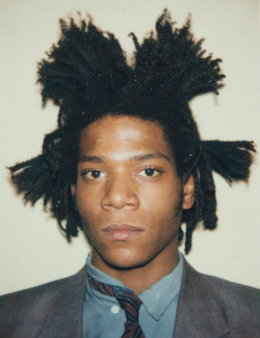
Jean-Michel Basquiat was an American artist who rose to success during the 1980s as part of the Neo-expressionism movement.
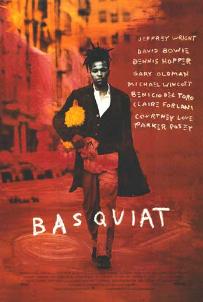
Basquiat is a 1996 American biographical drama film directed, written and co-composed by Julian Schnabel in his feature directorial debut. The film is based on the life of American postmodernist/neo expressionist artist Jean-Michel Basquiat. It is the first film about an American painter written and directed by another artist.
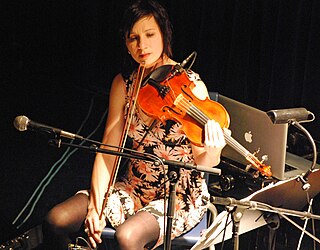
Eszter Balint is a Hungarian-American singer, songwriter, violinist, and actress.
SAMO is a graffiti tag originally used on the streets of New York City from 1978 to 1980. The tag, written with a copyright symbol as "SAMO©", and pronounced Same-Oh, is primarily associated with the artist Jean-Michel Basquiat, but was originally developed as a collaboration between Basquiat and Al Diaz.

Jean-Michel Basquiat: The Radiant Child is a 2010 documentary film directed by Tamra Davis. It crosscuts excerpts from Davis' on-camera interview with the artist Jean-Michel Basquiat and anecdotes from his friends and associates. The film was shown at the Sundance Film Festival in 2010.
Phoebe Hoban is an American journalist perhaps known best for her biographies of the artists Jean Michel Basquiat and Alice Neel. As a print journalist Hoban has penned articles on culture and the arts for Vogue, Vanity Fair, GQ, Harper's Bazaar, New York Magazine, The New York Times, Riot Material Magazine, ARTnews, and numerous other periodicals.

A Panel of Experts is a painting created by American artist Jean-Michel Basquiat in 1982.

Dos Cabezas is a painting created by American artist Jean-Michel Basquiat in 1982. The double portrait resulted from Basquiat's first formal meeting with his idol, American pop artist Andy Warhol.
Annina Nosei is an Italian-born art dealer and gallerist. Nosei is best known for being Jean-Michel Basquiat’s first art dealer and providing him with studio space in the basement of her gallery. From 1981 to 2006, the Annina Nosei Gallery represented or exhibited work by artists such as Barbara Kruger, Robert Longo, Ghada Amer, and Shirin Neshat.
Suzanne Mallouk is a Canadian-born painter, psychiatrist, and psychoanalyst based in New York City. She is best known for being amongst a core of East Village creatives in the 1980s and for her relationship with artist Jean-Michel Basquiat, both of which are chronicled by her friend Jennifer Clement in Widow Basquiat: A Memoir. In 2015, Vogue magazine listed Basquiat and Mallouk among "The 21 Most Stylish Art World Couples of All Time."
Christine Lhotsky, better known as Tina L'Hotsky, was an American actress, writer, and filmmaker. L'Hotsky was also a personality in the lower Manhattan scene in the late 1970s and early 1980s, becoming known as Queen of the Mudd Club.

Flesh and Spirit is a painting created by American artist Jean-Michel Basquiat c. 1982–83. The multi-panel painting, which is one of the largest ever made by Basquiat, sold for $30.7 million at Sotheby's in May 2018.

Untitled (Pollo Frito) is a painting created by American artist Jean-Michel Basquiat in 1982. The artwork was sold at Sotheby's for $25.7 million in November 2018.

Sabado por la Noche is a painting created by American artist Jean-Michel Basquiat in 1984. It sold for $10.7 million at Christie's in 2019.
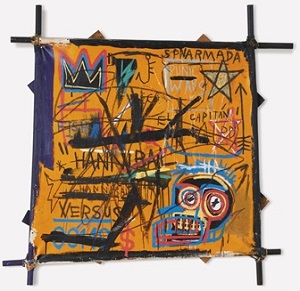
Hannibal is a painting created by American artist Jean-Michel Basquiat in 1982. The artwork, which features his signature skull and crown motifs, was sold at Sotheby's for $13.1 million in October 2016.
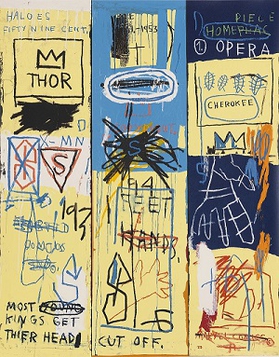
Charles the First is a painting created by American artist Jean-Michel Basquiat in 1982. The artwork is a tribute to jazz musician Charlie Parker, and it was the basis for rapper Jay-Z's 2010 song "Most Kingz."

Bird on Money is a 1981 painting created by American artist Jean-Michel Basquiat in 1981. It is a tribute to jazz musician Charlie Parker, who was nicknamed "Bird." The painting was acquired in 1981 and is housed in the Rubell Family Collection. In 2020, New York rock band the Strokes used the artwork as the cover for their studio album The New Abnormal.

Untitled (One Eyed Man or Xerox Face) is a painting created by American artist Jean-Michel Basquiat in 1982. In May 2021, it sold for $30.2 million at Christie's in Hong Kong.

Jean-Michel Basquiat is a painting created by American artist Andy Warhol in 1982. Warhol made multiple silkscreen portraits of artist Jean-Michel Basquiat using his "piss paintings."

Leonardo da Vinci's Greatest Hits is a painting created by American artist Jean-Michel Basquiat in 1982.















